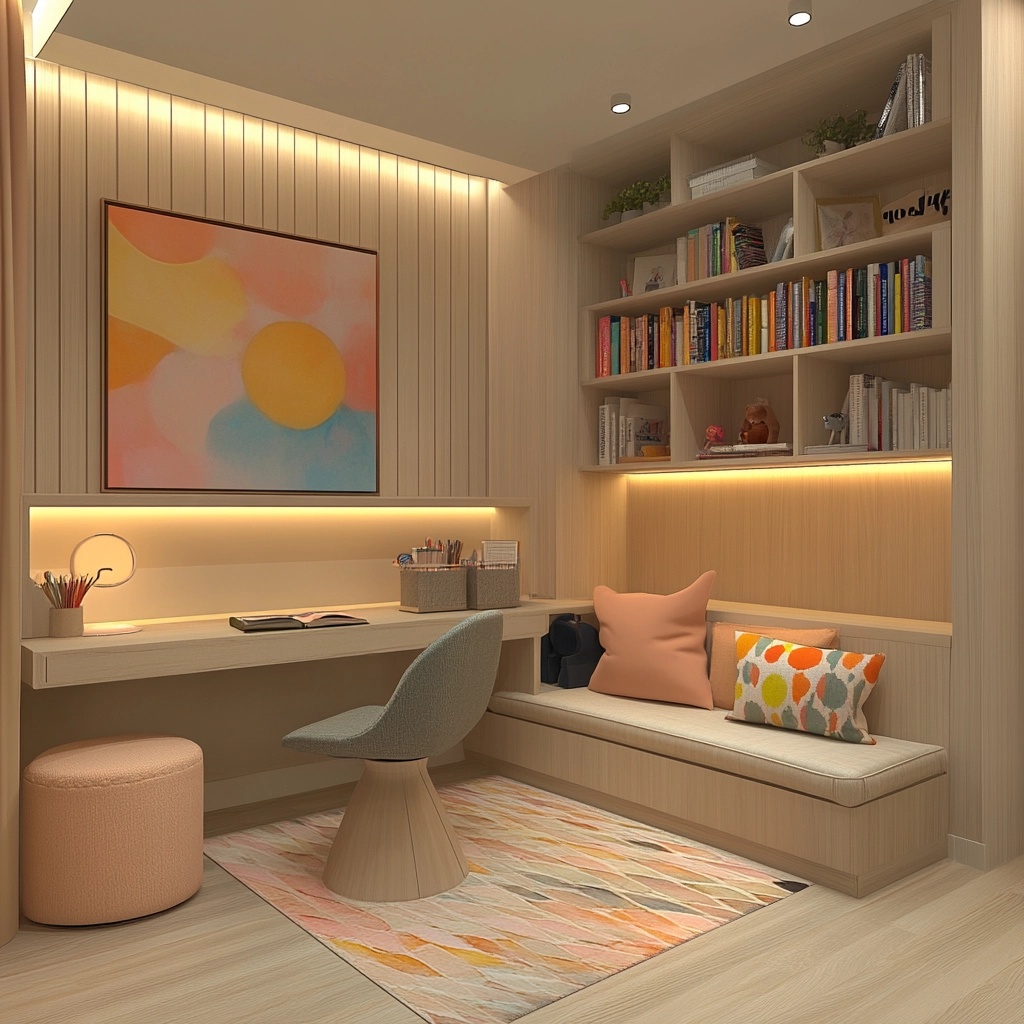
Small Space, Big Impact: Smart Styling Tips for Compact Homes
In today’s world of urban living, many of us find ourselves in compact homes—be it a cozy apartment, a city studio, or a tiny house. But small doesn’t have to mean cramped or uninspiring. With smart styling, thoughtful choices, and a few clever tricks, you can turn even the tiniest of spaces into a stunning, functional sanctuary that reflects your style and makes a big impact.
In this blog, we’ll explore how to style small spaces effectively—breaking it down into definitions, key features, benefits, real-world examples, and practical tips for beginners. Whether you’re downsizing, starting fresh, or looking to maximize your space, you’ll find everything you need to design smart, stylish, and comfortable compact living.
Definition: What Does “Smart Styling” Mean for Compact Homes?
Smart styling refers to the art of designing small spaces with intention, where every element serves a purpose—often more than one. It focuses on maximizing functionality, enhancing visual space, and ensuring that style isn’t sacrificed due to square footage.
Smart styling isn’t just about squeezing furniture into a room. It’s about making mindful decisions that amplify comfort, utility, and beauty—no matter the size of your home.
Key Features of Smart Styling for Small Spaces
Multipurpose Furniture
Think beds with drawers underneath, nesting tables, fold-out desks, and ottomans that double as storage units.Vertical Thinking
When floor space is limited, go up! Wall-mounted shelves, tall cabinets, and hanging storage can save precious square footage.Light and Bright Palettes
Lighter color schemes visually expand a room, making it feel airy and open.Minimalist Design
Decluttering and simplicity create visual calm, allowing small spaces to breathe.Mirrors and Reflective Surfaces
Reflect light and add depth—an age-old trick for doubling perceived space.Zoning Without Walls
Rugs, lighting, and furniture placement define different areas without closing them off.
Benefits of Smart Styling in Small Homes
Improved Functionality
Thoughtfully styled small spaces work hard for your lifestyle, giving you everything you need in less square footage.Less Clutter, More Calm
Smart storage and minimalist design help reduce visual noise, promoting peace and clarity.Budget-Friendly
Smaller spaces mean fewer furnishings and accessories—saving you money while still looking chic.Easier Maintenance
Less to clean and organize means more time to enjoy your space.Increased Creativity
Designing within constraints challenges you to think outside the box and discover truly unique solutions.
Examples of Small Space Styling That Works
Studio Apartment with Defined Zones
Style: Scandinavian minimalism
Smart Features: A fold-out Murphy bed that disappears by day, a rug to define the living area, open shelving dividing space without blocking light.
Result: One open room feels like three distinct spaces—bedroom, living room, and workspace.
Tiny Urban Kitchen
Style: Modern industrial
Smart Features: Magnetic knife rack, pegboard wall for utensils, open floating shelves, fold-down dining table.
Result: A compact kitchen that feels stylish, organized, and fully functional.
Compact Bedroom with Big Storage
Style: Japandi (Japanese + Scandinavian)
Smart Features: Platform bed with built-in drawers, wall-mounted lamps instead of bedside tables, light wood tones to keep the room open.
Result: A minimalist, restful retreat with zero wasted space.
Tips for Beginners: How to Style Small Spaces Like a Pro
Declutter First
Before styling, edit. Keep only what you love or truly need. Less stuff means more room to breathe and move.
Pro Tip: Follow the “one in, one out” rule. For every new item you bring home, remove one you no longer use.Choose Dual-Purpose Furniture
Think beyond traditional roles. A storage bench can be seating, a coffee table, or entryway storage all in one.
Examples: Sofa beds, wall-mounted desks, drop-leaf dining tables, storage ottomans.Use Light Strategically
Natural light is your best friend in a small space. Use sheer curtains or none at all. Add mirrors to bounce light around the room.
Styling Tip: Place a mirror opposite a window for maximum reflection and a brighter vibe.Opt for Slim and Tall Furniture
Avoid bulky pieces. Choose slim-profile furniture with legs to keep things feeling light and airy. Tall shelves draw the eye upward and use vertical space wisely.
Avoid: Overstuffed couches, oversized coffee tables, heavy armoires.Stick to a Light or Monochrome Color Palette
Light tones like white, cream, soft grey, and pastels make rooms feel larger. A monochromatic scheme adds visual continuity, which helps small spaces flow.
Styling Trick: Use a single accent color throughout to tie your space together without overwhelming it.Layer with Texture, Not Clutter
Add depth and warmth through texture—think woven baskets, linen curtains, velvet cushions—without piling on too many objects.
Pro Tip: Use baskets to store throw blankets, books, or even plants for visual interest and hidden storage.Embrace Open Shelving (But Keep It Tidy!)
In kitchens, bathrooms, or living rooms, open shelves can create a sense of openness—but only if they’re curated.
Tip: Style shelves with a mix of books, decor, and negative space for balance.Zoning with Rugs and Lighting
Define different areas within one room using rugs, pendant lights, or distinct wall colors.
Example: In a studio, place a rug under your bed area and another in your seating zone to create a “room within a room” effect.Go Vertical with Storage
Use wall-mounted organizers, hooks, and floating shelves to store everything from keys and bags to kitchen tools and books.
Pro Tip: Think of your walls as opportunities—not just decoration zones, but real storage potential.Keep It Personal
Even the smallest homes should reflect you. Don’t forget to add artwork, framed photos, plants, or objects that spark joy.
Styling Tip: Use a small gallery wall with consistent frames or tones to express personality without visual chaos.
Common Small-Space Mistakes to Avoid
Overfurnishing: Don’t try to cram a full living room set into 200 sq. ft. Choose fewer, multifunctional pieces.
Neglecting Vertical Space: Wasted wall space = missed opportunities.
Ignoring Flow: Doors and walking paths should never be blocked—arrange furniture to allow natural movement.
Overdecorating: Cluttered décor defeats the purpose. Edit accessories and keep surfaces open.
Lack of Lighting: One ceiling bulb won’t cut it. Layer in floor lamps, sconces, or LED strips.
Conclusion: Think Big, Style Smart
Living in a compact home doesn’t mean you have to compromise on style, comfort, or personality. In fact, small spaces invite creativity, challenge norms, and reward thoughtful decisions.
By embracing smart styling—from functional furniture to clever storage, lighting, and layout—you can transform your tiny home into a beautiful, inspiring space that lives much larger than it looks.
Start small—choose one room or corner to reimagine.
Declutter, rethink layout, and try one smart storage or furniture swap.
Take before-and-after photos to see your progress and celebrate the transformation.
Need help visualizing your space? Create a mood board or work with a designer to bring your vision to life.
Remember, in design—it’s not the size of the space, but how you style it that truly matters.
For any Query or Discussion contact us:
studio@jasminejhaveri.com
